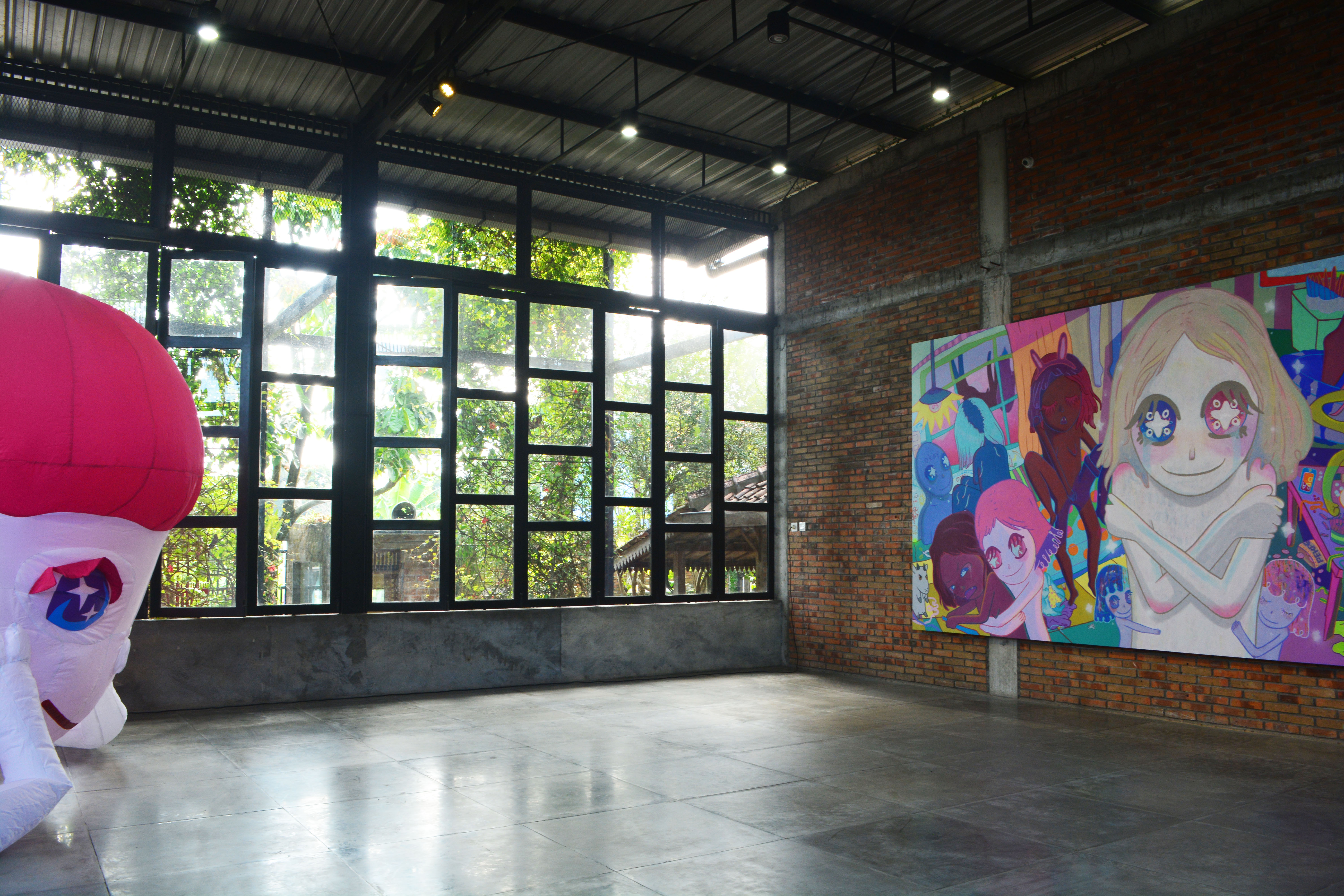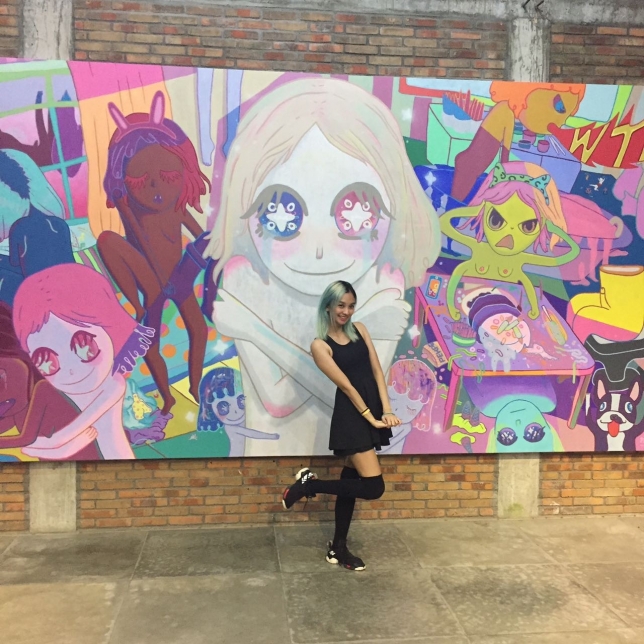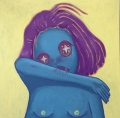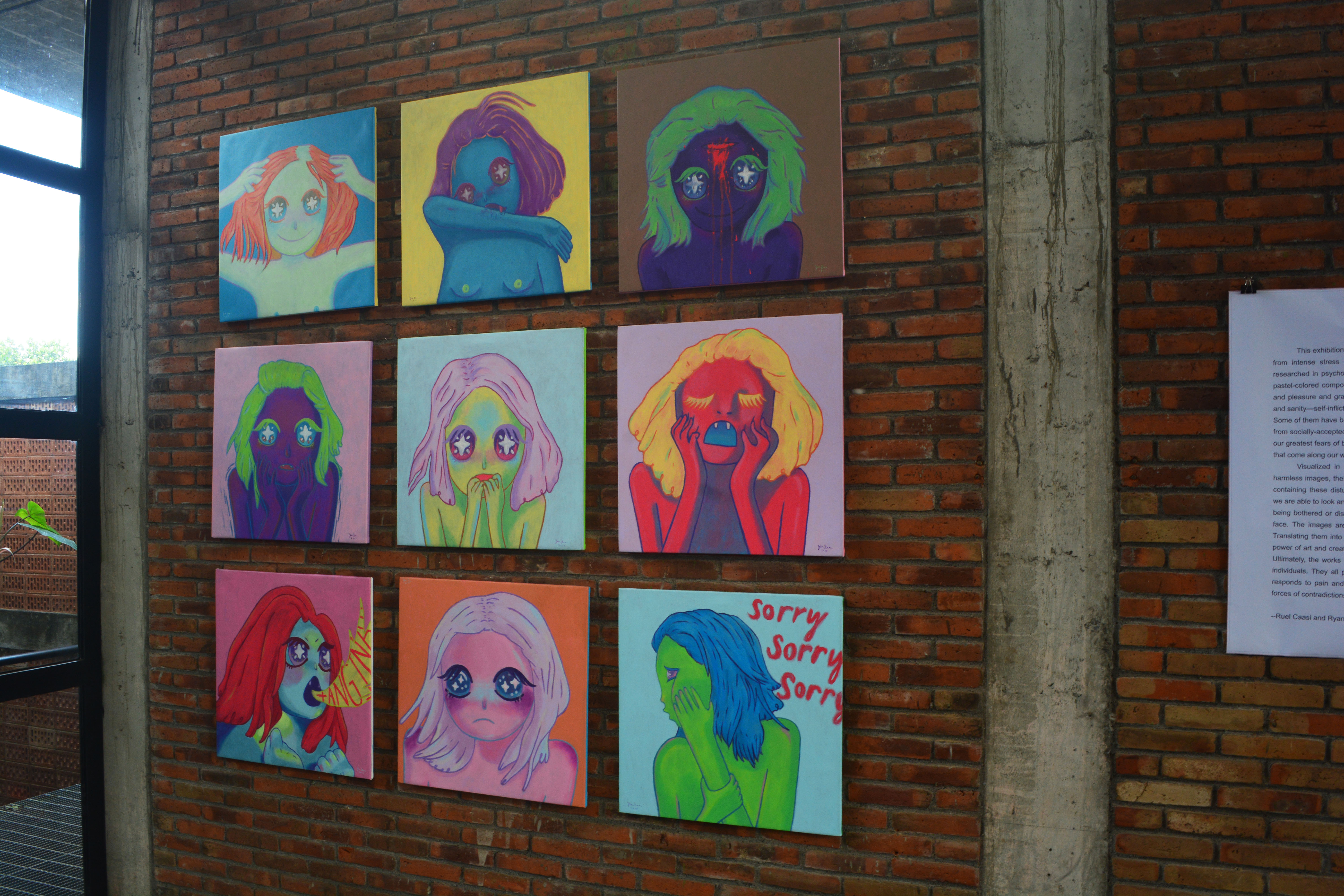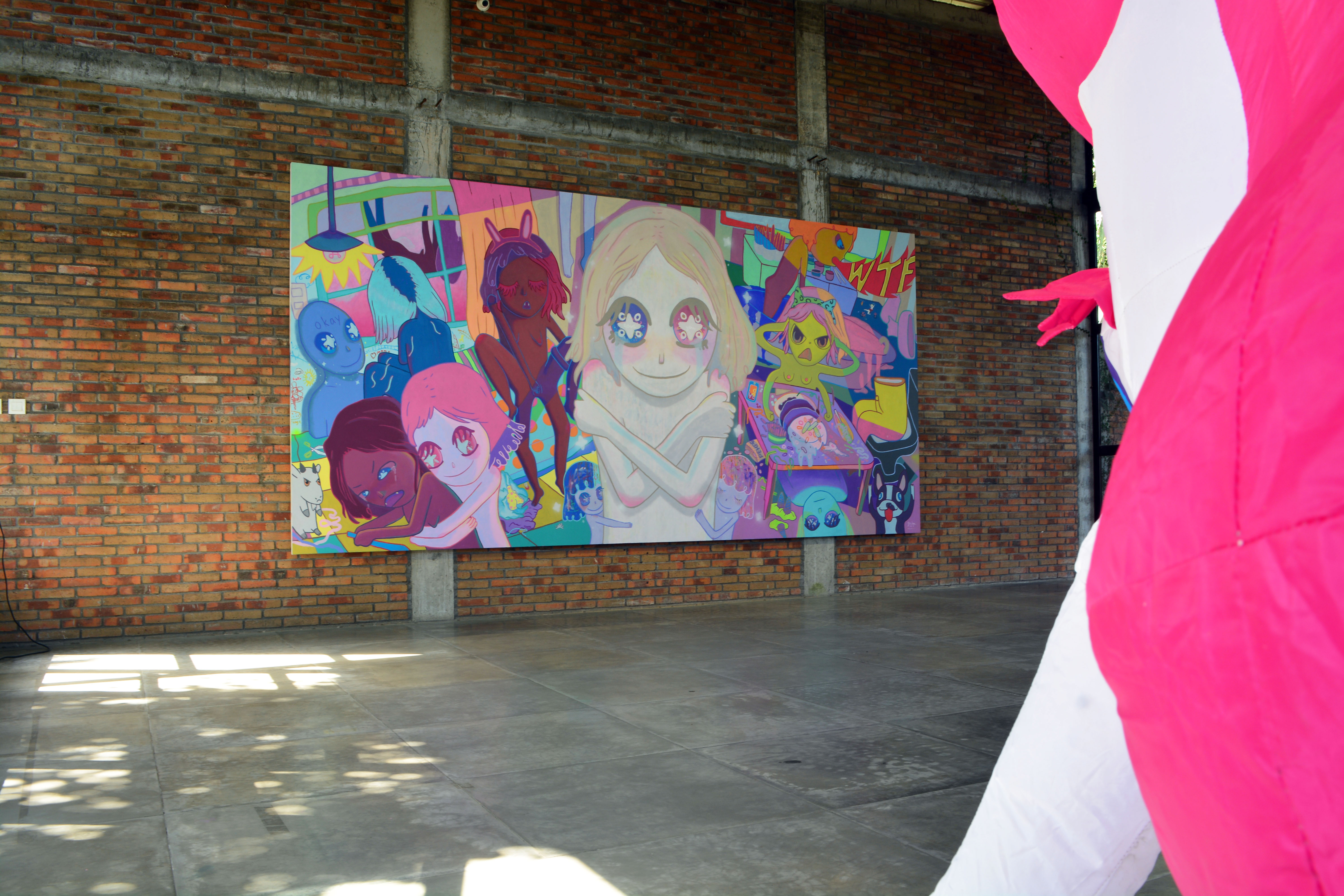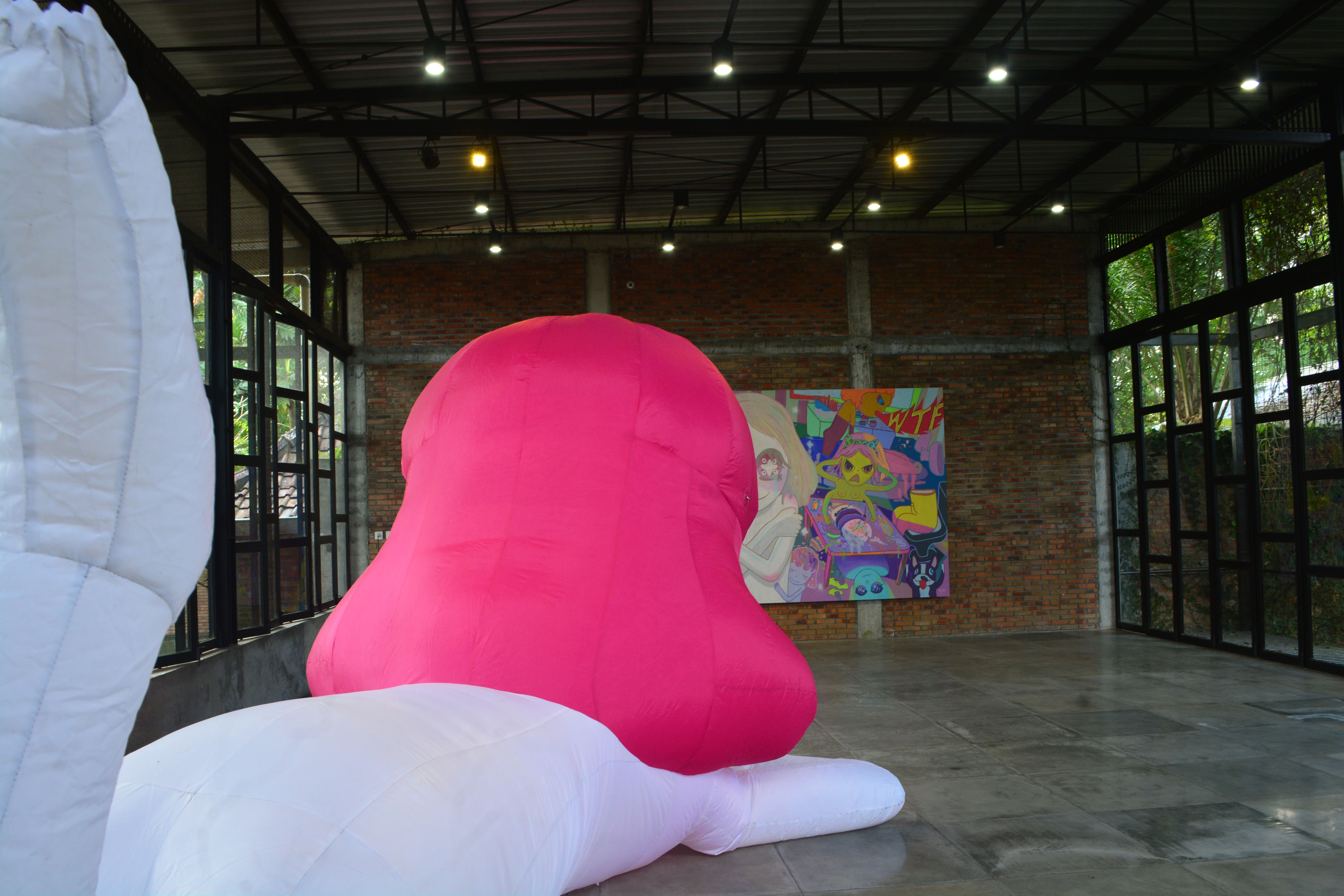YEO KAA in residency at the Office for Contemporary Art, Yogyakarta
A collaboration with ARNDT Fine Art and the Working Animals Art Project
Followed by a solo exhibition by Yeo Kaa at OFCA International
Opening: 19 May 2017 (parallel to ArtJog10, 19 May - 29 June 2017)
We are pleased to announce our collaboration with the Working Art Animals Art Project to support Yeo Kaa’s current artist residency at the Office for Contemporary Art (OFCA). This will culminate in a solo exhibition at OFCA International in Yogyakarta, opening on 19 May, 2017, and organized in tandem with ArtJog 10 (19 May - 19 June).
Yeo Kaa is a 27-year old emerging female artist from the Philippines. She recently showed her work with ARNDT Fine Art at Art Fair Philippines 2017 in Manila. Her acrylic paintings and illustrations appear at first glance to erupt with colour, her figures are executed as line drawings, sometimes with bold, flat colouration, sometimes not. Given a cursory inspection, the subject matter appears to match the cartoon-ish quality of the visuals. However, closer inspection reveals a dark, sometimes sinister undercurrent.
The Office for Contemporary Art (OFCA) is an artist initiative, founded by Berlin based art historian Astrid Honold and artists Jumaldi Alfi and Fendry Ekel. It started in 2004 as Astrid Honold OFFICE in Amsterdam. Honold gained her experience by coordinating worldwide exhibitions for renown international design label droog during almost one decade. In 2011 OFCA International moved from Amsterdam to Indonesia, located in Sarang, an art complex in Kalipakis, Yogyakarta.
OFCA was established to position active skilled artists within an international context. The organization is based on a shared mission to advance the artists’ positive role in society through a varied, open, and practical dialogue about contemporary fine art. OFCA International is developing exhibition concepts, lectures, writing and research in fine art such as the exhibition formats, "Prima Visione" and "RE-PLAY", which have shown the works of Heri Dono, Entang Wiharso, Anusapati, Handiwirman Saputra and Filippo Sciascia among others over the course of 2013-2016. In producing exhibition programs and publications OFCA International collaborates with other institutions such as: Black Cat Publishing Berlin, graphic design Studio Laucke-Siebein Amsterdam/Berlin, Partner Yogyakarta, international art historians from Freie Universität and Humboldt Universität Berlin, Yogyakarta Open Studio (YOS), Berlin Open Studio (BOS), galleries and museums.
The Working Animals (TWA) Art Projects is an artists initiative working in close collaboration with museums, galleries and other art related institutions. It has been actively engaging in projects that assist artists in programming, developing, and showcasing their practices. These projects include curation, exhibitions, and residencies, and publication, among others. TWA is continuously expanding its network to more individuals and institutions that share its aspiration to promote art-making that is both sustainable and grounded in art history and social contexts.
Distressful Satisfaction
(Text by Ruel Caasi and Ryan Francis Reyes)
Yeo Kaa’s latest body of works once again proves to be as provocative as they are eye candy. She playfully takes us into another tour of a brightly-lit and bubble-gum flavored world of pastels and stylized figures reminiscent of cartoon and animation characters, dolls, and stuffed toys—everything nice, fun, and cute. It is a visual treat of intoxicating colors and honeyed palette, which seemingly leaves no room for the dark, haunting, and gloomy. But a closer look at the pieces will reveal that they are far from pictures of the pleasant and ideal. Right before the viewers’ eyes are direct and straightforward illustrations of individuals in rage, self-inflicting bodily harm, or caught in the act of sexual self-gratification. As honest and nonchalant as they are, these explicit images might be disturbing to one’s delicate senses or even offensive, the content instantly betraying the cheerful and merry mood evoked by its form.
She calls this series Distressful Satisfaction, instructive of the overarching theme unifying the works: the contrast between the opposing temperaments of suffering and pain on the one hand, and pleasure and satisfaction on the other. Her art has always been founded on the friction between opposites, and it is this tension that invigorates her craft and sets it apart from the imagery found in children’s books or animation. In her previous works, one would always see images of violence and gore, such as mutilated body parts or a murder scene, combined with smiling characters rendered in joyful, saturated colors. She capitalizes on the discomfort created by such unlikely combination, a sort of disjuncture between style and subject, to lead her viewers into a continuous and sustained engagement with the painted image, constantly unsettling preconceived notions and associations about certain visual properties. It is the same aesthetic sense we find in well-known characters and scenes from pop culture, such as a mad clown out on a killing spree, or an evil doll terrorizing playing children. The combination of images operating in the same language is endless: a machine gun with floral pattern, a ghastly knife with ribbons, and so forth. But why the fixation with such imagery, one may ask. Could they be an extension of the artist’s personality? The recurring figure of a girl in all her past solo exhibitions, as well as her distinguishing colorfully dyed hair, could provide a cue. But, just like many other artists, the factual and the fictional are seamlessly mixed in her oeuvre, the personal are intricately woven with stories she has collected from other people she meets or encounters, or narratives she purely imagines.
In this exhibition, she explores the various coping mechanisms that an individual under tremendous amount of stress or anxiety goes through. She has been known for her penchant for depicting the darker tendencies of human nature, a preoccupation that may be both personal and aesthetic. In her latest solo exhibition, for example, she fiddled with random thoughts and musings while being awake in the most unholy hours of the night, entertaining disturbing thoughts like killing someone or committing suicide. We know a lot about these acts and tendencies from psychology and the behavioral sciences. Much has been said and researched about them, and still many questions linger and are yet to be revealed and discovered. Experts have dealt with such issues and concerns in their specific disciplines, with the hope of providing healthy and more socially-acceptable ways of dealing with them. Some of these acts have been framed as disorders or anomalies in need of clinical intervention, from therapy and counseling to medication and even surgery. While deeply affecting the personal level, these conditions and behaviors also have a social impact, and can have repercussions beyond the individual and reach the level of the collective. For instance, suicide has already been studied as a phenomenon deeply affecting the society as a whole.
The focal piece is a large-scale painting offering a tableau of different scenes. We see a dominant figure at the center of a pale-skinned, teary-eyed girl embracing herself for comfort. She is being hugged by two smaller figures on her two sides. This cluster of figures alludes to the need for comfort, a natural tendency for humans to long for reassurance and companionship. The smaller figures may be imaginary to the dominant figure, the people we expect to be on our side, both literally and figuratively, in times when we are in dire need to be consoled. In their absence, an individual may retreat into a fantasy world where the much needed love and affection is readily available and easily provided.
The central figure bisects the plane into two sections, but she is actually standing on the foreground of a continuous space which appears to be a home. The domestic setting can be identified by its familiar fixtures and furnishings: a hanging lamp, grilled window, tiled flooring, bed, mirror, dining table, toilet and bathtub. This choice of setting intensifies the contrasting themes of tension and relief, disturbance and comfort, which are set in a kind of tug-of-war in this work. The home is often romantically painted as the abode where one feels most at ease and safe, but ironically, someone undergoes episodes of distress right inside it. This stark contradiction echoes with some people, as their personal experiences might verify that the home is far from the ideal it is often associated with. Stories of violence and abuse happening at home are not uncommon, and such accounts resonate loudly with the painting’s depiction.
On the left side of the painting, one sees a juxtaposition of scenes in line with the exhibition’s theme. A girl attempts to stab herself, a clear reference to suicide or self-infliction of bodily harm, but is prevented from doing so by another girl who embraces her from behind. Other references to suicide occur in the figure just above the left side of the central figure where one sees a pair of legs hanging from above. Near the window is a girl, its back facing the viewers, and with a few strands of hair on her body. Her head is marked by a striking void, a hairless part resulting from habitual hair-pulling as a stress reliever. A bald figure looks at her intently as if observing her while doing the act. On the bed, we find a character depicted in the act of pleasuring herself sexually, another form of self-gratification. Here, pleasure is used to ease pain or distress, and this detail of the painting shows an instance when the lines between pleasure and pain are blurred.
The other side of the painting deals with outrage and anger and how it manifests in actions, behaviors and gestures. We see a figure standing on a bathtub which appears to be cursing or shouting, indicated by a flame coming out of her mouth so raging that it hits and destroys the sink. This calls to mind screaming and the blurting out of verbal profanities as an outlet to let off steam or anger, which in turn eases stress and discomfort. Seated on a dining table, a girl with multiple arms is unmistakably infuriated, venting out her anger on the table by hitting it and spilling the food served all the way to the floor. The two pairs of arms signify the state of confusion she is in, unsure of what to do. The amount of food served can also be a reference to binge-eating or stress eating. This right half of the painting is in a state of mess, and illustrates pent-up energy from frustration being channeled to more physically destructive actions and violent tendencies.
While it may easily appear that the work relies significantly on direct depictions, albeit not heavily narrative, it is not at all devoid of symbolic language. The artist also employs a good deal of symbolic details and achieves a harmonious balance between the literal and the figurative. From the view outside the window, one would notice a falling figure, a girl gravitating towards the ground. While it may also work as an additional reference to suicide, the concept of falling is replete with associations and carries a whole symbolic baggage. It can convey the idea of failure, giving up, or succumbing to distress and anxiety. The same can be signified by the figure lying underneath the dining table like a corpse or dead person, as if submitting to the weight over it without any resistance. Indifferent to the mess around it, this person lying down is too numb to feel the pressure and tension surrounding it.
Another key concept embodied through symbolic language in the painting is the conscience and its cognates. Recurring throughout work is the rational self or the voice of reason in constant battle with more impulsive, irrational tendencies. This can be seen in a number of figures, such as the figure embracing the girl stabbing herself. The figure may well be taken as her own self, a projection or reflection of her conscience preventing the harm that is about to happen. In a similar vein, the bald figure looking at the girl can be a vision of her future self, all hair have totally fallen off as if reminding her of the inevitable. The armless figure also hints at the conscience preventing her from touching her hair and preventing more harm. The placement of the hanging lamp above this figure strengthens this symbolic interpretation, for it is like the light illuminating a person from the dark. The representations of this conscience are contrasted with their opposites using lighter and more luminous tones, as if suggesting the purity of good versus the darkness of evil. All of these articulations of an inner, more rational voice constantly reminding us of right and wrong illustrate the age-old tale of the battle between good and evil, a saga that is yet to find its conclusion.
Though not having a prominent spot on the entire composition, the presence of animals, one on each side of the painting, draws attention to pets and their relationship with humans in the context of anxiety and stress. It has been recognized that keeping pets somehow eases or relieves stress, in addition to providing added love and affection and an undying loyalty to their masters. Interestingly, the two animals on each side show different responses to the scenes they are witnessing. One appears indifferent and just stays in the corner, while the other one looks at the viewer in a joyful expression, in effect diffusing the more intense atmosphere on its side.
The nine smaller paintings in the exhibition serve as individual profiles of persons suffering from anxiety, each one featuring a coping mechanism which the larger painting mostly reiterates. These are different faces of being stressed, presented mostly in frontal view. With each coping mechanism isolated, they become profiles of symptoms indicative of stress or anxiety. Adding to the self-infliction of bodily harm are weeping, shaking, slapping, nail-biting, and so forth. These paintings magnify the emotions involved when one suffers from stress and anxiety, which the artist effectively captures using expressive colors. The portraits survey the range of emotions one can feel in an anxious or stressed state, which are by no means limited to the melancholic and gloomy. The smiling and cheerful faces are instances when we are faking a pleasant façade to appear okay or normal, a veneer that betrays an internal, painful truth.
All these images show an individual caught between madness and sanity, the competing forces standing in a deadlock. Suspended between rising above the situation and being consumed into depression, the individual subject finds itself on the threshold of losing it. The depictions are not mean to be prescriptive on what is morally right or wrong, or what is harmless or detrimental to one’s well-being. At the same time, they are not purely clinical representations lacking emotion and sentimentality. Perhaps these images can remind us of our own vulnerabilities us humans, our biggest fears of being alone and having no one to turn to except ourselves in trying times. As social beings, it is in our very nature to long for companionship, to seek the complement to what is lacking in us. The works may also stress that there is just a thin line separating what is normative to what is regarded as disorders, and this line is constantly being drawn and redrawn. Visualized in a fun and playful manner, deeply troubling sights are contained within harmless images, their potentially-destructive effects downplayed and their haunting effects to viewers diluted. By containing these disturbing realities, we are able to look at them and observe them in a nonchalant way. We can look at them intently without being bothered or disturbed, and we are saved from the trouble of dealing with them face-to-face. The images are anatomies of the human psyche reduced to more intelligible chunks. Translating them into pictorial forms may well function as coping mechanism in itself, and the power of art and creative impulses to aid in improving the human condition becomes apparent. Pain, suffering, stress, and anxiety are inevitable doses of our own imperfection.
Ultimately, the works are pictorial representations of a reality being experienced by countless individuals. They all point to the complexity of the human subject, and the varied ways one responds to pain and suffering. They describe a person grappling with internal and external forces of contradictions, contradictions that may never be resolved or eliminated.
